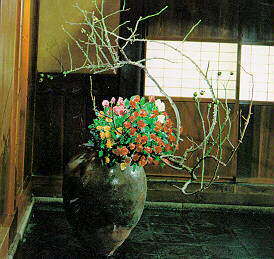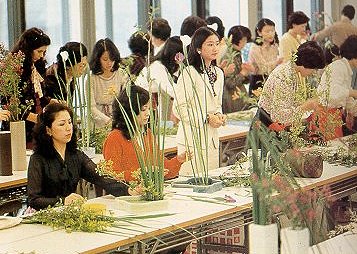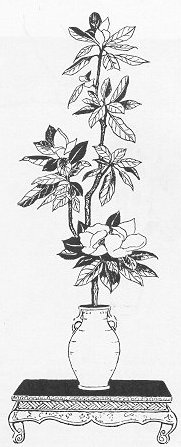
Ikebana

Ikebana is the practice of flower arrangement, a highly developed artistic form dating back hundreds of years.
It is specifically the art of combining flowers, grasses and branches in or around a vase to unite nature and artistic technique. By the 17th century it had become known as the Way of Flowers.
When flowers are put into the vase the most striking blossoms are placed highest, the others at middle or lower levels depending on their size and color. The three levels are termed tenchijin meaning heaven, earth and mankind. The flower arrangement thus represents the entire cosmos.

Students learning the art of Ikebana in a Tokyo school. 6 million people study Ikebana each year and 2.4 million take courses in the tea ceremony. The people taking the classes are almost all women.
Moribana is putting the flowers in a vase without obvious artificial arrangement. Fine metal spikes and rings are used to support a three-dimensional arrangement of flowers and branches placed in a wide, shallow bowl. Emphasis is on asymmetry.

The fundamental composition of Ikebana is shown in the three main lines which make up a triangular figure in this particular flower arrangement.
Main Index
Japan main page
Japanese-American Internment Camps index page
Japan and World War II index page
|